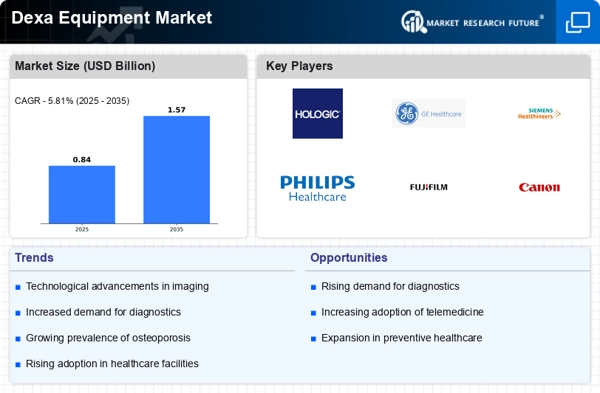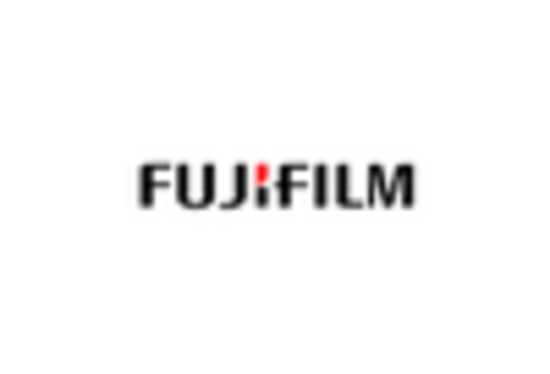Increased Geriatric Population
The increasing geriatric population is a pivotal factor driving the Dexa Equipment Market. As life expectancy rises, the proportion of older adults in the population is expanding, leading to a higher prevalence of age-related health conditions, including osteoporosis. This demographic shift necessitates the availability of effective diagnostic tools to monitor and manage bone health. The Dexa Equipment Market is poised to benefit from this trend, as healthcare providers seek to implement routine bone density screenings for older adults. Furthermore, the demand for home healthcare services is also on the rise, which may lead to the development of portable Dexa equipment solutions. This evolution in the market landscape indicates a promising future for Dexa equipment as it adapts to meet the needs of an aging population.
Technological Innovations in Imaging
Technological advancements in imaging techniques are significantly influencing the Dexa Equipment Market. Innovations such as enhanced imaging algorithms and improved detector technologies are leading to more accurate and efficient bone density assessments. These advancements not only enhance the precision of Dexa scans but also reduce the time required for procedures, making them more appealing to healthcare facilities. The market for Dexa equipment is projected to grow at a compound annual growth rate of around 5.2% over the next few years, driven by these technological improvements. As healthcare providers adopt state-of-the-art Dexa systems, the industry is likely to witness increased competition and investment, further propelling growth and development in the sector.
Increasing Prevalence of Osteoporosis
The rising incidence of osteoporosis, particularly among the aging population, appears to be a primary driver for the Dexa Equipment Market. As individuals age, the risk of developing osteoporosis escalates, leading to a heightened demand for diagnostic tools that can accurately assess bone density. According to recent estimates, osteoporosis affects approximately 200 million women worldwide, prompting healthcare providers to seek advanced Dexa equipment for early detection and management. This trend is likely to continue, as awareness of osteoporosis and its consequences grows, thereby fostering a robust market for Dexa equipment. The Dexa Equipment Market is thus positioned to benefit from this demographic shift, as healthcare systems increasingly prioritize preventive measures and effective treatment options.
Expansion of Healthcare Infrastructure
The expansion of healthcare infrastructure, particularly in emerging economies, is likely to serve as a significant driver for the Dexa Equipment Market. As countries invest in healthcare facilities and services, the demand for advanced diagnostic equipment, including Dexa machines, is expected to rise. This trend is particularly evident in regions where healthcare access has historically been limited. The establishment of new hospitals and clinics, coupled with government initiatives to improve healthcare delivery, is anticipated to create a favorable environment for the Dexa Equipment Market. Additionally, as healthcare providers seek to offer comprehensive services, the integration of Dexa equipment into routine health assessments is likely to become more commonplace, further stimulating market growth.
Rising Awareness of Preventive Healthcare
The growing emphasis on preventive healthcare is emerging as a crucial driver for the Dexa Equipment Market. As healthcare systems worldwide shift focus from reactive to proactive care, the demand for diagnostic tools that facilitate early detection of health issues, such as osteoporosis, is increasing. This trend is reflected in the rising number of health screenings and wellness programs that incorporate bone density assessments. The Dexa Equipment Market stands to gain from this shift, as healthcare providers recognize the importance of early intervention in managing bone health. Furthermore, public health campaigns aimed at educating individuals about the risks associated with low bone density are likely to bolster demand for Dexa equipment, thereby enhancing market growth.


















Leave a Comment